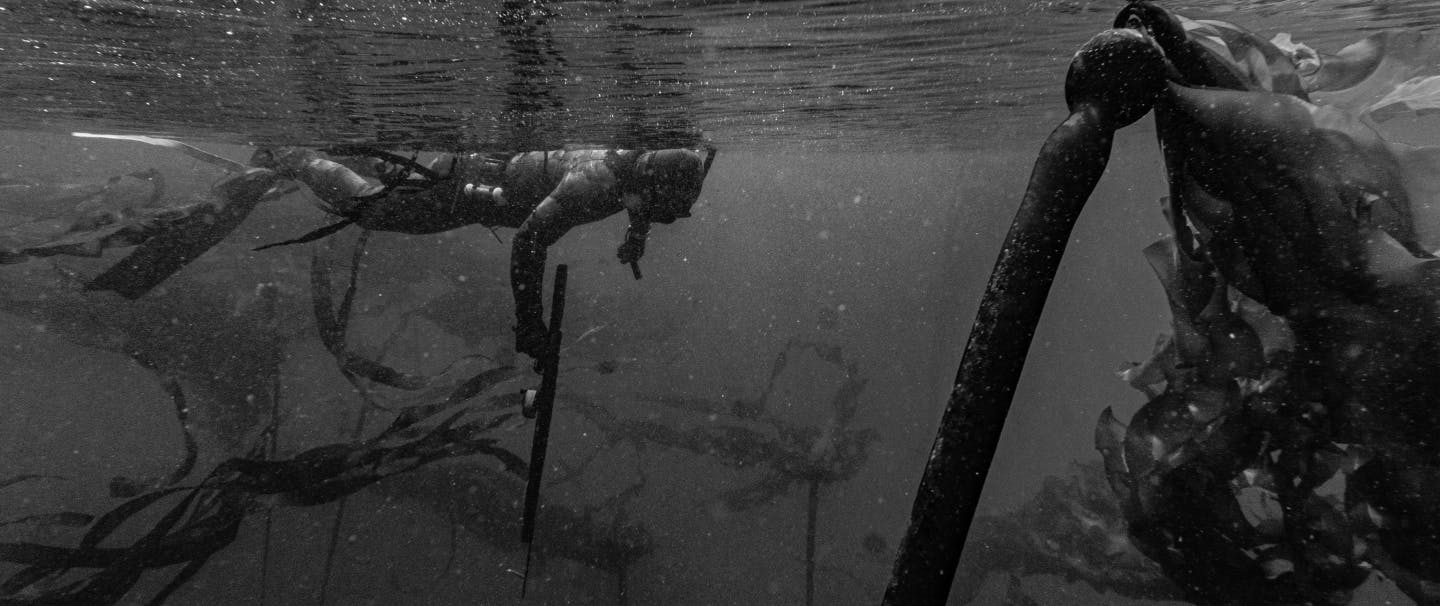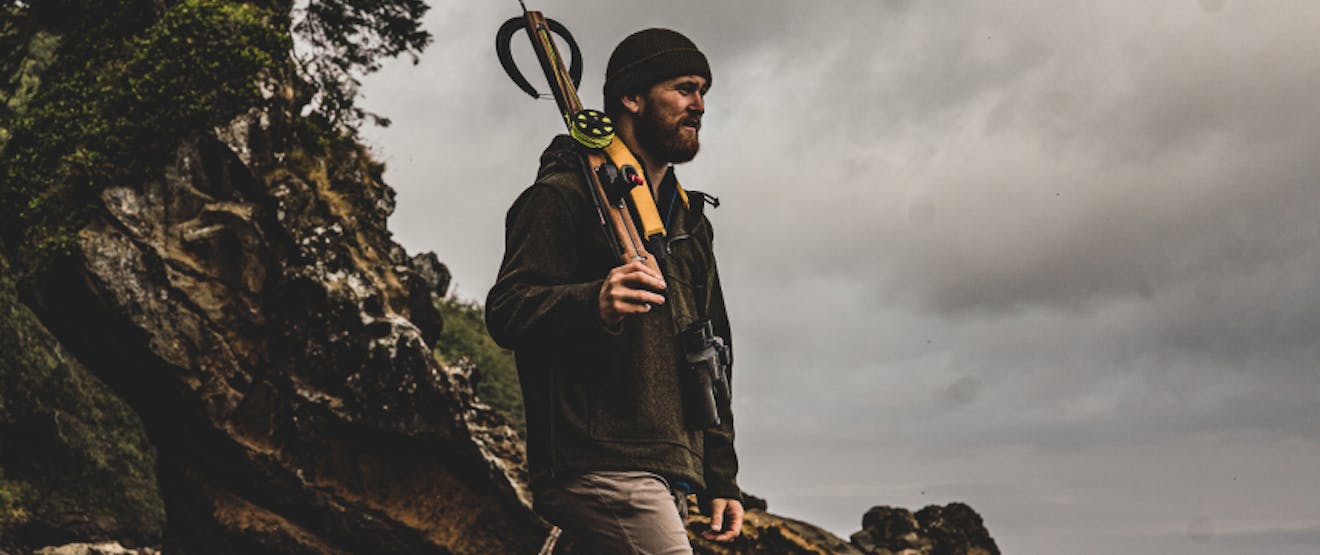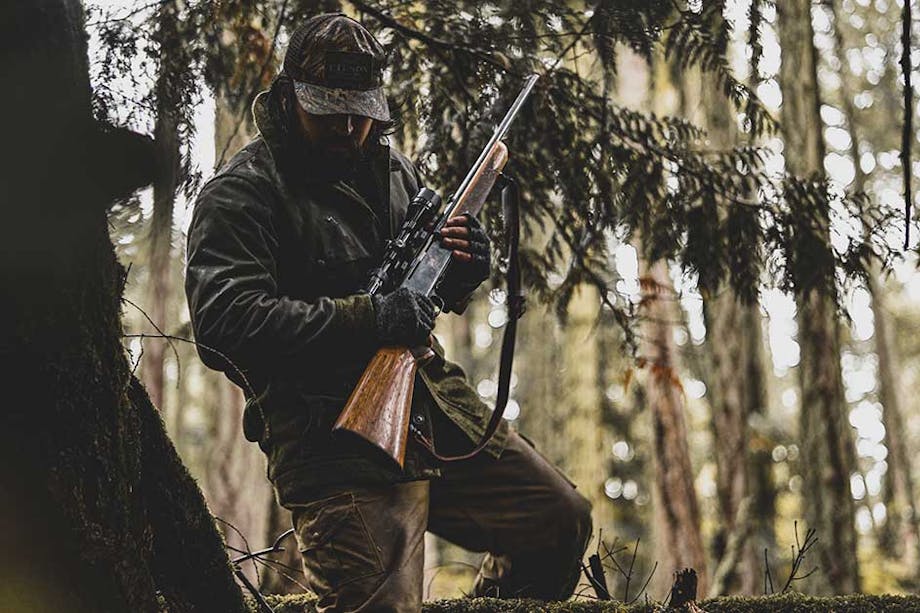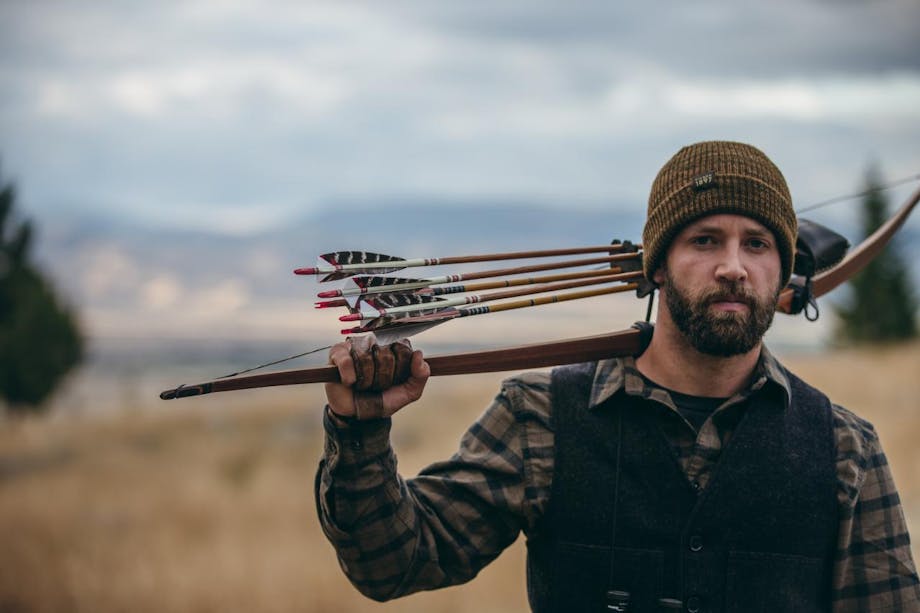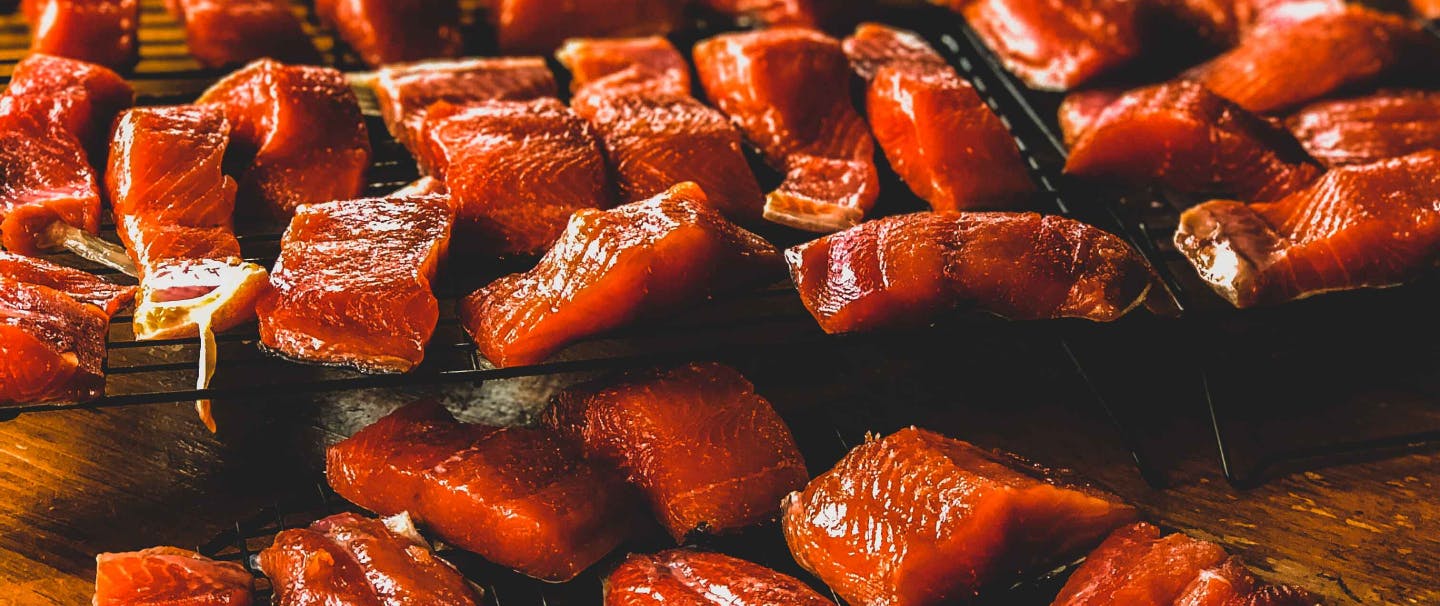FREEDIVING AND SPEARFISHING CALLS UPON A SET OF ANCIENT HUMAN REFLEXES PRESENT IN EACH OF US. AS SOON AS YOUR FACE HITS COLD WATER, YOUR HEART RATE SLOWS, BREATHING DEEPENS, AND BLOOD SHIFTS FROM YOUR LIMBS TO YOUR CORE. FOR THOSE WHO PRACTICE BREATH-HOLD DIVING, THESE PHYSIOLOGICAL CHANGES ARE OFTEN ACCOMPANIED BY A DEEP SENSE OF CALM AND RELAXATION.
As many land hunters can attest to, part of the reason they choose to hunt is to get in touch with an instinctual, ancestral aspect of themselves. There is something primal about the pursuit of an animal that we find alluring. Breath-hold diving in the pursuit of fish is particularly addicting as it connects us to two innate and perhaps often-forgotten aspects of ourselves: the physiological dive reflex and the pursuit of prey. Many of my friends in the spearfishing community describe the depth of this connection as “the only place where the worries of modern life effortlessly fade away.”
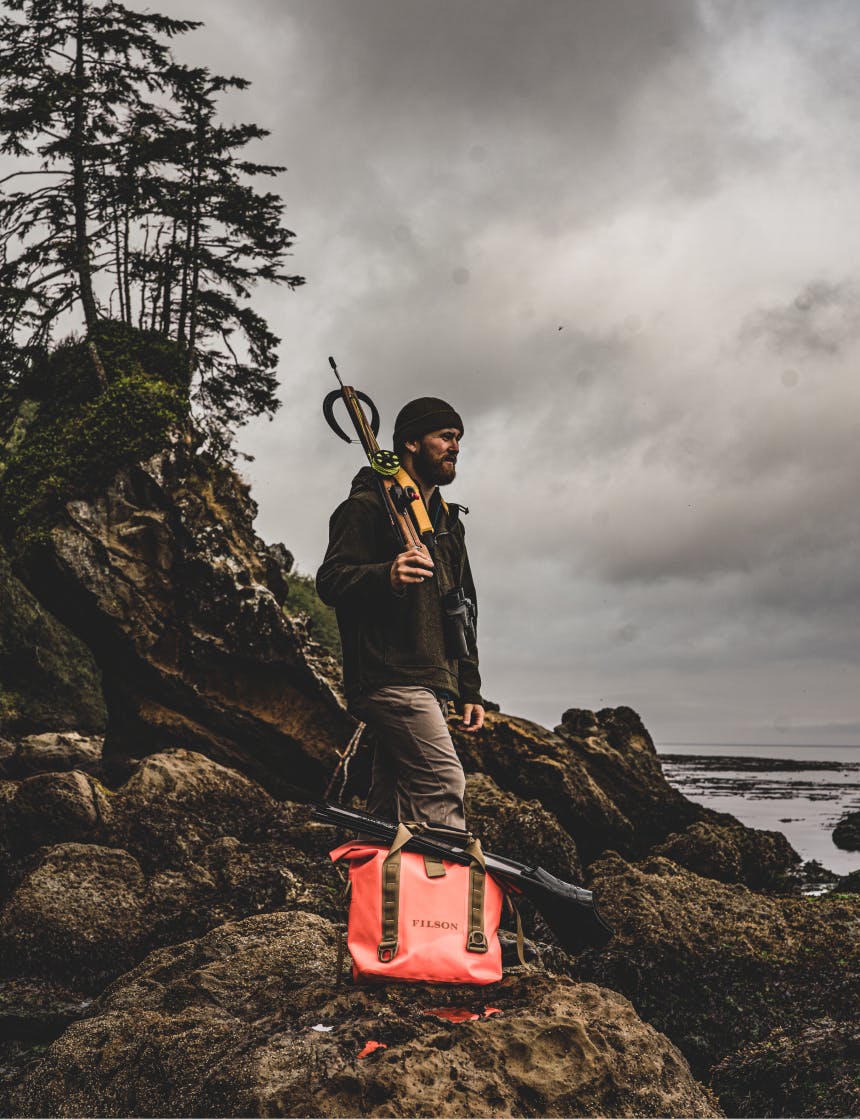
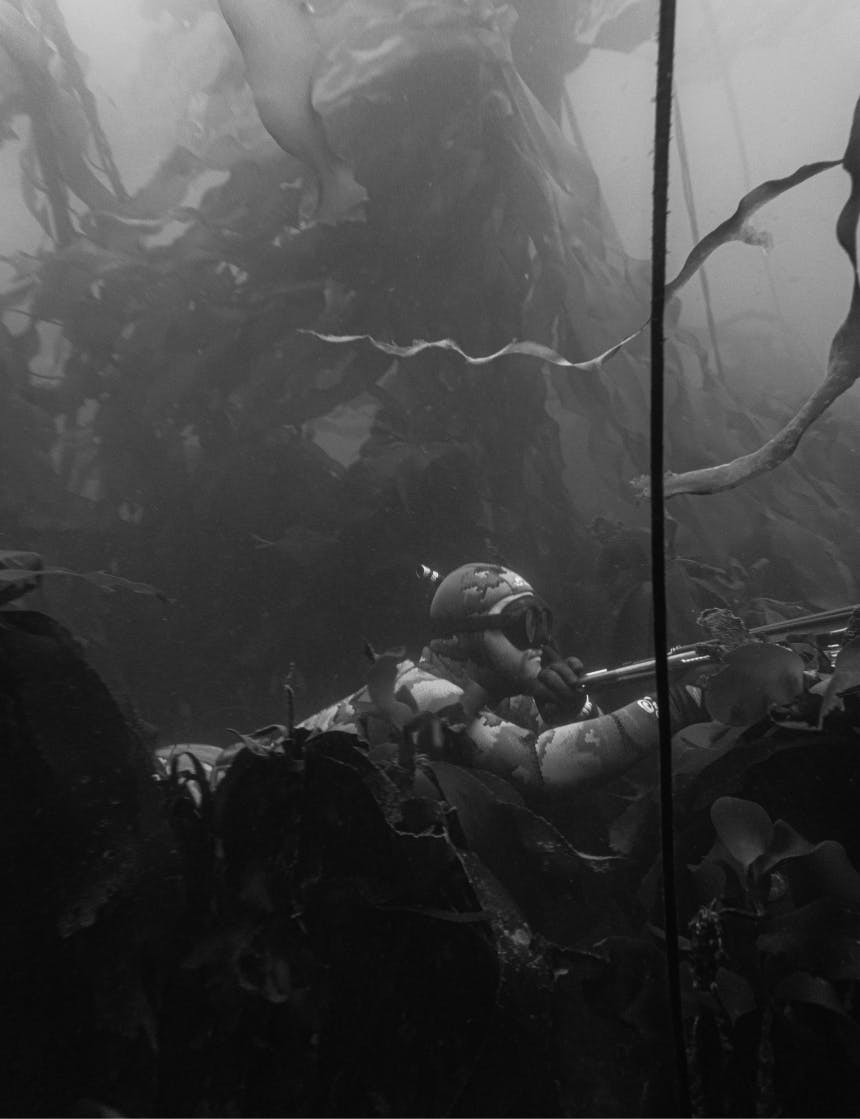
Speargun in hand and lungs full, a dive begins with a kick from the surface. Three-foot-long fins propel you effortlessly to the sea floor, anywhere from 30 to 80 feet below. Once at depth, subtle aspects of the rocky bottom structure hint at where fish might be: a ledge here, a crack there, a patch of kelp in the right area. A dense and vibrant patchwork of green, purple, and red kelps, and multi-colored invertebrates, decorate the rock and camouflage the resident fish.
AS MANY LAND HUNTERS CAN ATTEST TO, PART OF THE REASON THEY CHOOSE TO HUNT IS TO GET IN TOUCH WITH AN INSTINCTUAL, ANCESTRAL ASPECT OF THEMSELVES.
Success here in the PNW often means getting your body down into this kelp layer, looking in dark holes, and stealthily creeping around boulders with speargun extended. If you’re lucky, you pick out the shape of a large lingcod, nestled into a crack, given away by the leopard pattern along its long, muscular tail, or its oversized toothy white jaws. A well-placed shot behind the gills galvanizes the fish into action. It bucks and twists, somersaulting though the water. A hand through the gills allows you to haul the fish to the surface, where you reunite with your dive buddy and quickly subdue your catch.
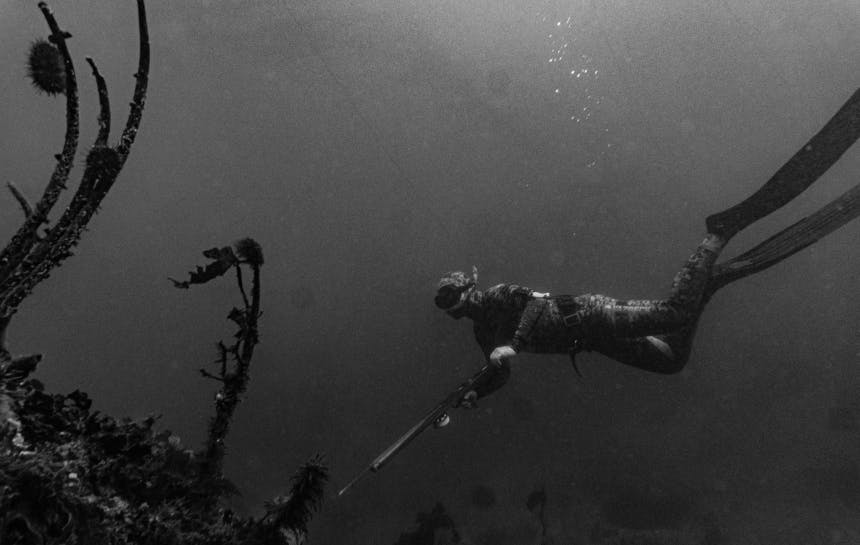
Here in the seas of the Pacific Northwest, large forests of kelp provide shelter for the fish you are seeking. Unlike hunting on land, the entire vertical space of the kelp forest is your place to hunt. At its base, the kelp is often rooted in loose boulders that form a system of caves and holes where predatory cabezon and lingcod await prey. Stalks of kelp rise from the sea floor like columns in a cathedral, arching near the surface to form a vaulted ceiling. Schools of black and blue rockfish often hover in this intermediate zone, illuminated by rays of sunlight that penetrate the matt of kelp at the surface. This hallowed space is yours for the hours that you and your dive buddy spend canvassing its depths.
The remote sites that make for the best spearfishing often mean that you and your dive buddies will be camping. The basic sites I so often find myself in are certainly rough, often just a flat spot without running water. But like the diving, camping without many of the comforts of civilization is somewhat the point. Thick forest and ocean views make better wallpaper than any artisan can anyway. This is of course not to say that these expeditions are all grit. A dive trip is not just time in the water, but afternoon naps in a hammock, extravagant cookouts, and long nights by the campfire with good whiskey and better friends.
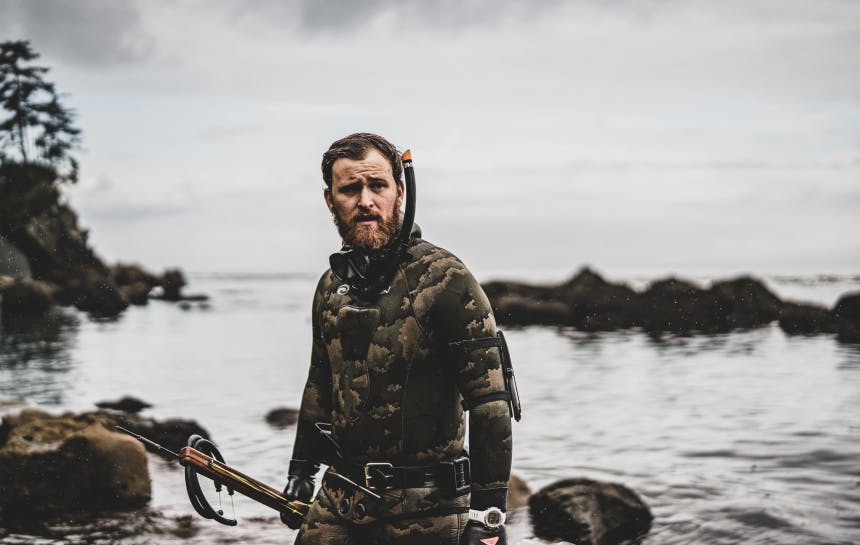
There is no bycatch for a careful spearfisherman, and local delicacies like bull kelp, rock scallops, and Dungeness crab can become regular features of your dishes.
Spearfishing and freediving in the Pacific Northwest are often made challenging by cold waters, poor visibility, and severe weather. The proper training and the right gear are crucial to a safe and effective dive trip. For a new diver, a level 1 freediving certification opens the doors for you to safely dive and makes networking in the community much easier. Open-cell neoprene suits mitigate the cold and long freedive fins allow you to propel yourself efficiently. Heavy-duty rain gear and warm wool keep you dry when scouting new areas and breaking down fish back at camp. If this type of hunting does seem to suit you, you should keep in mind that it is perhaps the most sustainable way to get seafood to your plate.
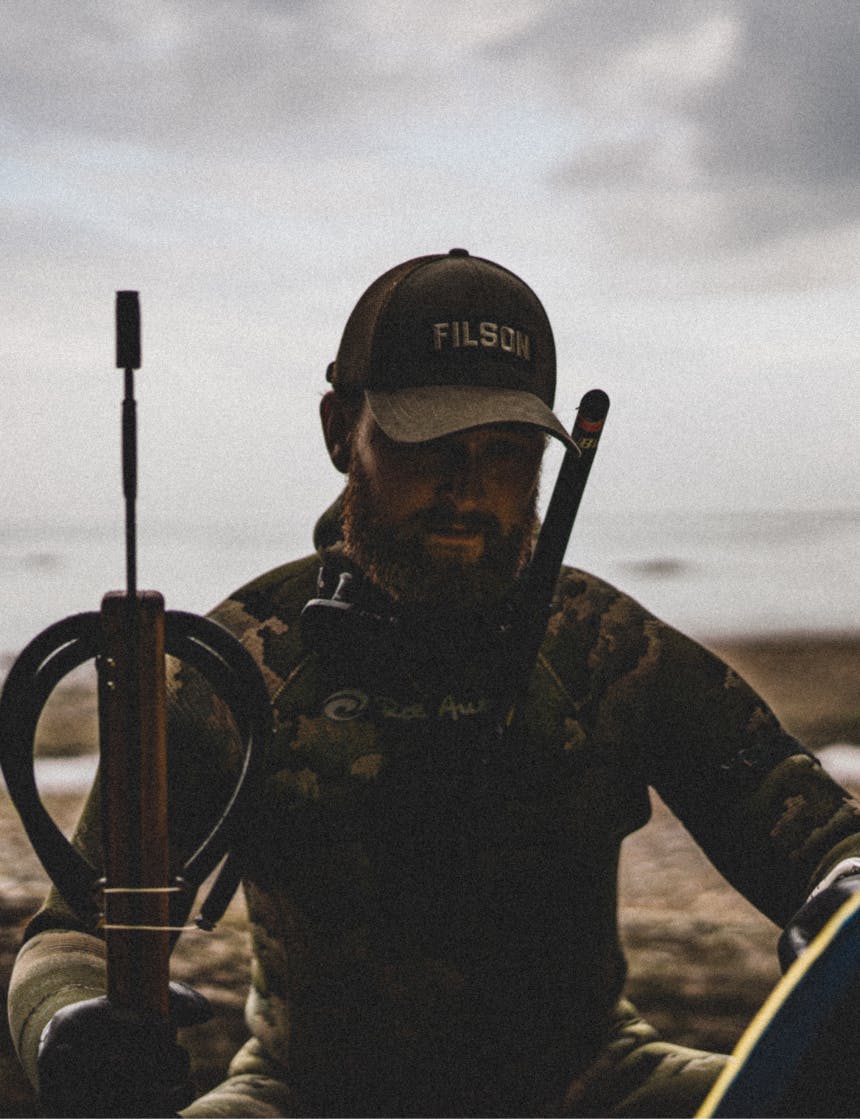
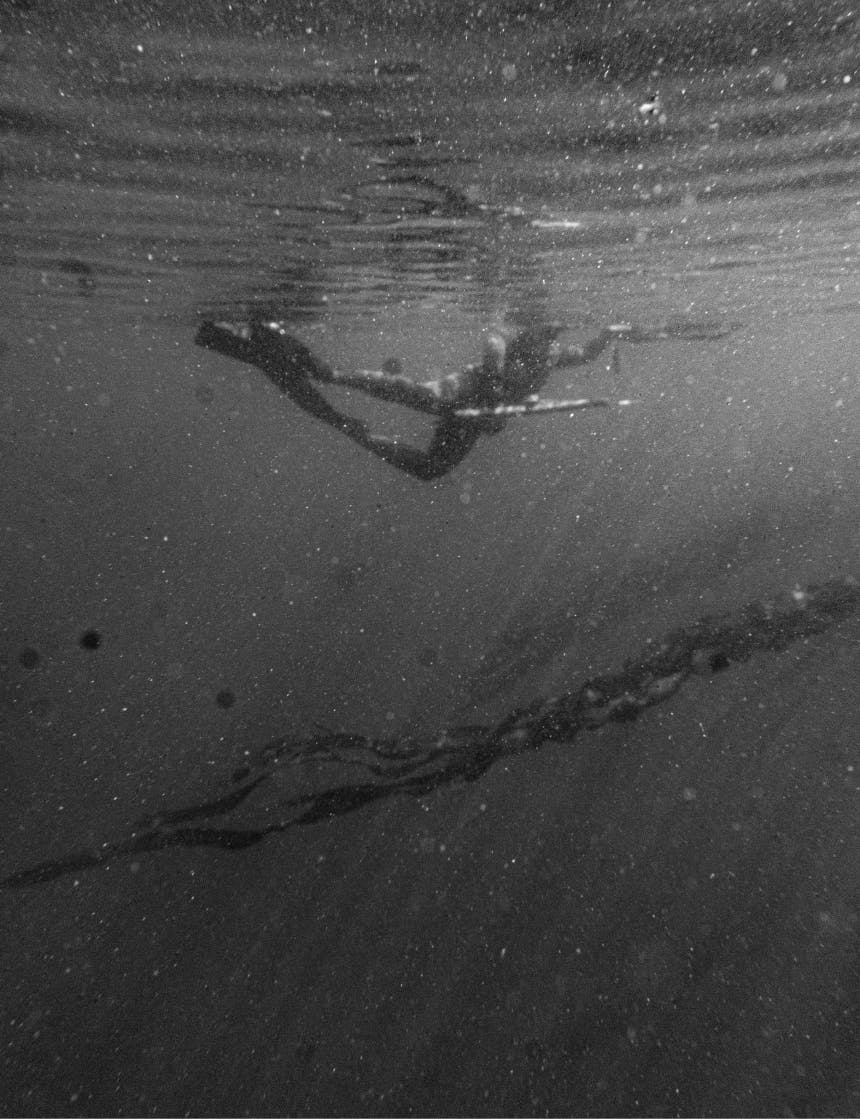
There is no bycatch for a careful spearfisherman, and local delicacies like bull kelp, rock scallops, and Dungeness crab can become regular features of your dishes. The coastline here in the Pacific Northwest is rugged and cold, but its stunning landscape offers not only a bounty, but a way to reconnect with a more primal part of ourselves that many have long forgotten.
